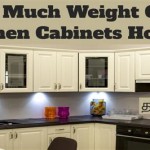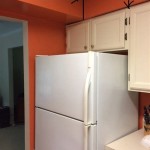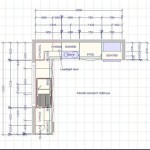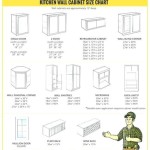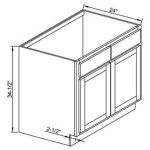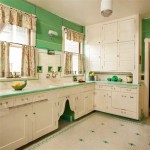Material Considerations for Kitchen Cabinets
The selection of materials for kitchen cabinets is a critical decision in any kitchen renovation or new construction project. The chosen material impacts not only the aesthetic appeal of the space but also its durability, functionality, maintenance requirements, and overall cost. A thorough understanding of the characteristics of various materials is essential for making an informed decision that aligns with individual needs and preferences.
The kitchen is often considered the heart of the home, and cabinets are a dominant feature within this space. They provide storage for cookware, dishes, food items, and various kitchen essentials. The material used for these cabinets must be able to withstand the demands of a high-traffic environment, including exposure to moisture, heat, and potential impacts. Furthermore, the aesthetic considerations should complement the overall design style of the kitchen and the rest of the home.
Several factors influence the choice of cabinet material, including budget, desired style (traditional, modern, contemporary, etc.), anticipated usage frequency, and personal preferences regarding aesthetics and maintenance. A detailed exploration of the most common materials available for kitchen cabinets will provide valuable insights for making the right choice.
Solid Wood: Timeless Elegance and Durability
Solid wood cabinets are renowned for their natural beauty, durability, and timeless appeal. Different wood species offer distinct characteristics in terms of grain patterns, colors, and hardness. Hardwoods like maple, oak, cherry, and walnut are commonly used for kitchen cabinets due to their strength and resistance to wear and tear. Softwoods, such as pine, are generally less expensive but may be more susceptible to dents and scratches. Solid wood is a natural material that can expand and contract with changes in humidity, which can potentially lead to warping or cracking if not properly sealed and maintained.
Maple is a popular choice for kitchen cabinets due to its smooth, uniform grain and light color, which can be easily stained or painted. It is a hard and durable wood that resists scratches and dents, making it a suitable option for busy kitchens. Oak is known for its distinctive grain pattern and strength, and it is available in both red and white varieties. Cherry wood offers a rich, reddish-brown color and a smooth texture, lending a touch of elegance to any kitchen. Walnut is a luxurious wood with a dark, chocolate-brown hue and a beautiful grain pattern.
The main advantage of solid wood is its long-lasting durability and potential for refinishing. Minor scratches or dents can often be repaired, and the cabinets can be restained or repainted to update their appearance. Solid wood cabinets also offer a natural warmth and character that is difficult to replicate with other materials. However, solid wood is generally more expensive than other options, and it requires regular maintenance to prevent moisture damage and maintain its appearance.
When considering solid wood cabinets, it is important to inquire about the wood's grade and construction methods. High-grade wood with minimal knots and imperfections will result in a more aesthetically pleasing and durable product. Cabinets constructed using mortise-and-tenon joints or dovetail joints offer superior strength and stability compared to those assembled with staples or screws alone. Proper sealing and finishing are also crucial for protecting the wood from moisture and ensuring its longevity.
Plywood: A Stable and Cost-Effective Alternative
Plywood is an engineered wood product made from thin layers of wood veneer that are glued together under pressure. It is a stable and cost-effective alternative to solid wood for kitchen cabinets. Plywood is less susceptible to warping and cracking than solid wood because the cross-laminated layers of veneer counteract the natural tendency of wood to expand and contract with changes in humidity. It also provides a smooth, even surface for painting or applying veneers.
Plywood is available in different grades based on the quality of the veneer and the type of adhesive used. Higher-grade plywood is typically used for cabinet doors and exposed surfaces, while lower-grade plywood may be used for cabinet boxes and shelving. Marine-grade plywood is specifically designed for use in wet environments and is often used in kitchens near sinks or dishwashers.
One of the main advantages of plywood is its affordability compared to solid wood. It also offers greater design flexibility, as it can be easily shaped and cut to create custom cabinet configurations. Plywood can be finished with paint, stain, or veneer to achieve a wide range of aesthetic styles. However, the edges of plywood can be visible and may require edge banding to create a finished look.
When selecting plywood for kitchen cabinets, it is important to consider the thickness and grade of the material. Thicker plywood provides greater strength and stability, while higher-grade plywood offers a smoother surface and fewer imperfections. The type of adhesive used in the plywood construction is also important, as some adhesives may emit volatile organic compounds (VOCs). Look for plywood products that are certified as low-VOC to ensure a healthier indoor environment.
Medium-Density Fiberboard (MDF): A Smooth and Affordable Option
Medium-density fiberboard (MDF) is an engineered wood product made from wood fibers that are bonded together with resin under high pressure and heat. It is a smooth, dense, and uniform material that is often used for cabinet doors and drawer fronts. MDF is less expensive than solid wood and plywood, making it an attractive option for budget-conscious homeowners.
MDF is known for its smooth surface, which is ideal for painting. It does not have any grain patterns, knots, or imperfections, providing a consistent and flawless finish. MDF is also dimensionally stable, meaning that it does not expand or contract as much as solid wood in response to changes in humidity. This helps to prevent warping and cracking, ensuring that the cabinets maintain their shape over time.
However, MDF is more susceptible to water damage than solid wood or plywood. If MDF gets wet, it can swell and lose its structural integrity. It is therefore important to protect MDF cabinets from moisture exposure, especially in areas near sinks and dishwashers. MDF is also heavier than solid wood and plywood, which can make it more difficult to install.
When considering MDF for kitchen cabinets, it is important to choose a high-quality product that is manufactured with moisture-resistant resins. Look for MDF that is CARB (California Air Resources Board) compliant to ensure that it meets strict standards for formaldehyde emissions. MDF cabinets should be properly sealed and finished to protect them from moisture and to enhance their durability. While MDF is a good option for painted cabinet doors, it is not recommended for cabinet boxes or shelving, as it may not be strong enough to support heavy loads.
Laminate: Durable and Easy to Maintain
Laminate cabinets consist of a substrate, typically particleboard or MDF, covered with a decorative layer of laminate. Laminate is a durable and water-resistant material that is available in a wide range of colors, patterns, and textures. It is relatively inexpensive and easy to maintain, making it a popular choice for modern kitchens.
The laminate layer is typically made from layers of paper that are impregnated with resin and then fused together under high pressure and heat. This creates a hard, scratch-resistant surface that is easy to clean and maintain. Laminate is also resistant to fading and staining, making it a good option for kitchens that get a lot of sunlight or are prone to spills.
One of the main advantages of laminate is its affordability compared to solid wood and other materials. It is also available in a wide range of styles, from solid colors and wood grains to abstract patterns and textured finishes. Laminate cabinets can be easily cleaned with a damp cloth and mild detergent, making them a low-maintenance option for busy households.
However, laminate cabinets are not as durable as solid wood cabinets, and they can be susceptible to chipping and cracking if they are subjected to impact. The edges of laminate cabinets can also be vulnerable to damage, and they may require edge banding to protect them and create a finished look. Laminate cabinets cannot be easily repaired or refinished, so if they become damaged, they may need to be replaced.
When selecting laminate cabinets, it is important to choose a high-quality product that is made with a durable substrate and a thick laminate layer. Look for laminate that is scratch-resistant and water-resistant to ensure that it will hold up well over time. The edge banding should be securely attached and should match the color and texture of the laminate.
Metal: Sleek and Modern Aesthetics
Metal cabinets offer a sleek, modern aesthetic and are particularly well-suited for contemporary kitchens. Stainless steel is the most common type of metal used for kitchen cabinets due to its durability, corrosion resistance, and hygienic properties. Aluminum and other metals may also be used, often in combination with glass or other materials.
Stainless steel cabinets are highly resistant to water, heat, and stains, making them a practical choice for busy kitchens. They are also non-porous, which means that they do not harbor bacteria or mold. Stainless steel cabinets can be easily cleaned with a damp cloth and mild detergent, and they do not require any special maintenance.
One of the main advantages of metal cabinets is their durability. They are resistant to dents, scratches, and other types of damage, making them a long-lasting option for kitchen storage. Metal cabinets also offer a clean, minimalist look that can complement a variety of kitchen designs. However, metal cabinets can be expensive, and they may not be the best choice for homeowners on a tight budget.
Metal cabinets can also be prone to fingerprints and smudges, so they may require frequent cleaning to maintain their appearance. The sharp edges of metal cabinets can also be a safety concern, especially in households with small children. Metal cabinets can also be noisy, as doors and drawers may clang when they are opened and closed.
When selecting metal cabinets, it is important to choose a high-quality product that is made with a heavy-gauge metal. Look for cabinets that are well-constructed and have smooth, rounded edges. The hardware should be made from durable materials and should be easy to operate. Consider adding sound-dampening material to the inside of the cabinets to reduce noise.
What S The Best Material For Kitchen Cabinets In Usa

11 Types Of Cabinet Materials From Mdf To Stainless Steel

Types Of Kitchen Cabinet Materials Zeeland Lumber Supply

Learn About Diffe Materials For Kitchen Cabinets To Find The One That Suits Your Needs

9 Popular Kitchen Cabinet Materials In Malaysia

What Is Pvc And Why Choose Material For Kitchen Cabinets 1 Jpg
What S The Best Material For Kitchen Cabinets In Usa

9 Best Kitchen Cabinet Materials To Choose From Iproperty Com My

9 Popular Kitchen Cabinet Materials In Malaysia

Why Aluminium Kitchen Cabinet Perfect For Malaysian

